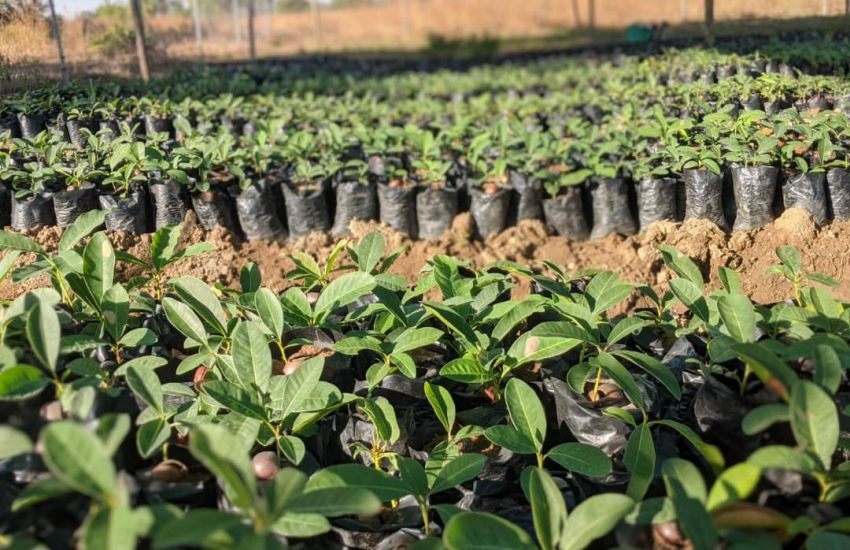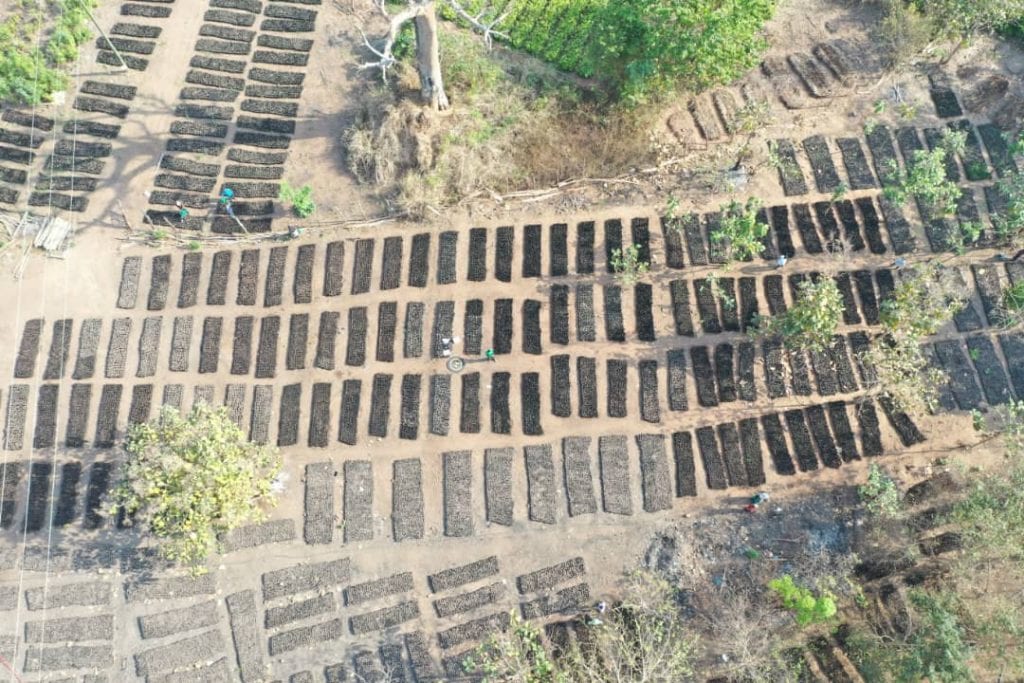Sustainable rattan harvesting: these farmers show that it…
24 April, 2025

Sustainable rattan harvesting: these farmers show that it…
24 April, 2025
Guguk village in Indonesia protect their customary forest
24 April, 2025
Monday 10 may 2021
Header photo: shea seedlings in a nursery © A Rocha Ghana
The tropical forest in central and northern Ghana has been severely damaged by illegal logging and charcoal production. That’s why we are working with local partner organisations A Rocha Ghana and Tropenbos Ghana to restore the forest.
‘With the Forest Landscape Restoration and Fuelwood project in Ghana, which is supported by GIZ, we have set the ambitious target of restoring an area of 700 hectares between 2019 and 2023,’ says Maxime Eiselin, innovation monitoring expert at IUCN NL. ‘We are doing this by reserving pieces of land for natural recovery, but also by actively planting new trees. These are grown in local nurseries and serve not only for forest recovery, but also to generate income for communities.’
In addition, we are committed to protecting the untouched areas of savannah in the Mole landscape and in and around the Bosomoa Forest Reserve, where the dry savannah forest changes into tropical rainforest.
Before long, a question arose: how can we best monitor whether the existing vegetation remains intact and whether the seedlings, once planted, actually grow into healthy trees that contribute to the restoration of biodiversity? After all, the saplings are vulnerable and can suffer from drought, forest fires and grazing livestock.
‘Originally, we were thinking of satellite images,’ says Eiselin. ‘These are generally very useful, but the pixels turned out to be too rough to map out the saplings accurately.’
Drones offer the solution. ‘They do capture the right level of detail to map the growth of the planted trees every quarter,’ Eiselin explains.
We therefore offered A Rocha Ghana and Tropenbos Ghana training in the use of drones for vegetation monitoring. These local conservation organisations are now equipped with the knowledge and tools to take aerial photographs quarterly and monitor the progress of landscape restoration.
‘They not only look at the growth of the seedlings, but also follow the development of the vegetation cover in places where they apply natural regeneration and keep an eye on whether the still untouched forest areas remain intact,’ says Eiselin.
The latter is particularly important. ‘Planting and natural regeneration are of little use if the remaining natural forest is lost in the meantime,’ Eiselin explains. Preservation of the existing forest is crucial for biodiversity.

Isaac Ntori, Project Officer at A Rocha Ghana, took part in the drone training: ‘It is exciting to have an aerial view of the sites, we can really see the progress we’re making in terms of restoration in the landscape. With the drones, we can also take photographs that show the difference between the sites where we are taking measures for landscape restoration and the sites that are left to business as usual.’
In the coming years, the knowledge we have gained about vegetation monitoring will be useful in gauging whether landscape restoration is progressing as desired, or whether adjustments are needed. The local communities will be actively involved in this process. ‘The drones will give better insight into what is happening in the landscape,’ says Eiselin. ‘This information helps the communities to manage the area better.’
24 April, 2025
The global demand for rattan is causing major damage to the forests of Indonesia, where rattan grows exclusively in the…
24 April, 2025
The Indigenous Marga Pembarap people of Guguk village in the province of Jambi, Indonesia have a long history of living…
